Thymus linearis Extracts Ameliorate Indices of Metabolic Syndrome in Sprague Dawley Rats
- PMID: 37151604
- PMCID: PMC10159745
- DOI: 10.1155/2023/5648837
Thymus linearis Extracts Ameliorate Indices of Metabolic Syndrome in Sprague Dawley Rats
Abstract
Materials and methods: The extract library (n-hexane (NH), ethyl acetate (EA), methanol (M), distilled water (DW), and combined extract (CE)) was standardized using in vitro phytochemical, antioxidant, and α-amylase inhibition assays, after which the protective effect of selected "hit," i.e., CE against metabolic syndrome, was determined in vivo, using rats fed a high-fat diet supplemented with additional cholesterol administration. CE was administered to Sprague Dawley rats in high dose as 100 mg/kg in carboxymethyl cellulose (CMC) (1 ml; 0.75% in DW) and low-dose group as 50 mg/kg in CMC (0.5 ml; 0.75% in DW). After 10 weeks, the effects of CE on insulin resistance, lipid metabolism, nonalcoholic fatty liver disease (NAFLD), oxidative stress, and genotoxicity were assessed through histological, biochemical, and hematological investigations.
Results: Phytochemical analysis including RP-HPLC analysis of the extracts showed that flavonoids and phenolics (myricetin, kaempferol, and apigenin), previously known to be effective against obesity and diabetes, are present in the extracts. Antioxidant studies revealed that the plant possesses a highly significant (p < 0.05) concentration of antioxidants. Satisfactory α-amylase inhibitory activity was also observed in in vitro experiments. In vivo studies showed that CE-administered animals had significantly (p < 0.05) lower weight gain and smaller adipocytes than the control group. Moreover, CE resisted any significant (p < 0.05) change in the organ weights. Analogous to findings from its traditional use, the plant extract had a positive modulatory effect on insulin resistance and hyperglycemia. The study also indicated that CE resisted high-fat diet-induced disturbance in lipid profile and countered any pathological changes in liver enzymes caused by fat-infused diet. Furthermore, a study on endogenous antioxidant levels indicated that CE was effective in maintaining catalase and peroxidase levels within the normal range and resisted the effects of lipid peroxidation of thiobarbituric acid reactive substances.
Conclusion: In principle, the current study's findings scientifically validate the implication of T. linearis in metabolic syndrome and recommend further studies on molecular insights of the observed therapeutic activity.
Copyright © 2023 Yamema Younatan et al.
Conflict of interest statement
The authors declare that they have no competing interests.
Figures

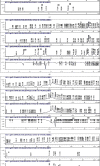
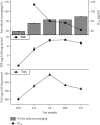

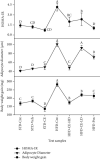

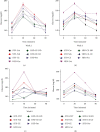

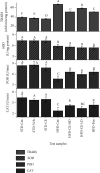

References
-
- Qadir M. I., Parveen A., Abbas K., Ali M. Analgesic, anti-inflammatory and anti-pyretic activities of Thymus linearis. Pakistan Journal of Pharmaceutical Sciences . 2016;29(2):591–594. - PubMed
MeSH terms
Substances
LinkOut - more resources
Full Text Sources
Medical

